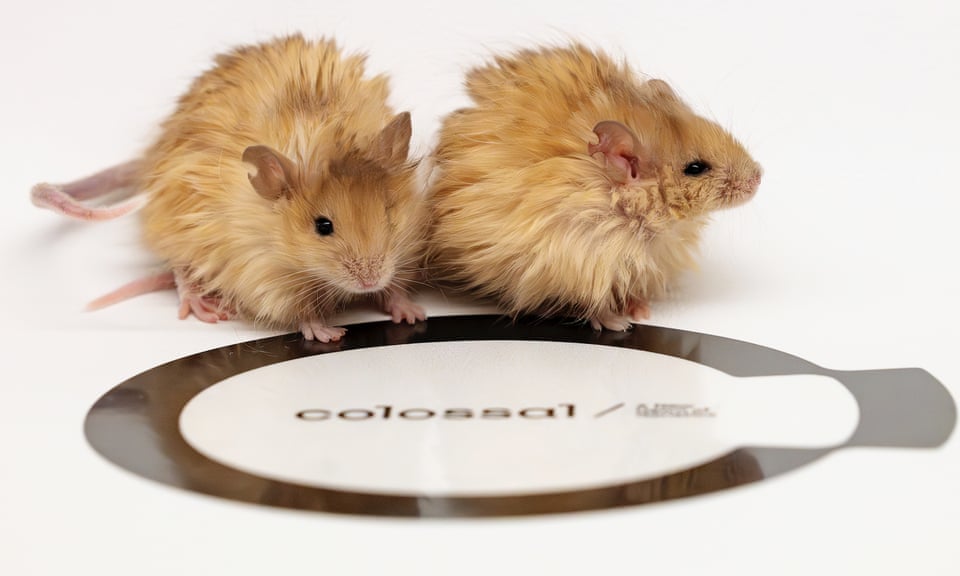Woolly Mice Unlock Path to Reviving Mammoth Traits
Colossal Biosciences' genetically engineered woolly mice pave the way for potential mammoth revival and innovative conservation strategies. Explore the exciting possibilities!

Key Points
- Colossal Biosciences
has successfully created genetically engineered woolly mice, showcasing advanced gene editing technology that mimics traits of extinct mammoths.
- The project aims to use these mice as a basis for modifying Asian elephants to potentially restore mammoth-like traits and combat climate change.
- Despite skepticism from some in the scientific community, the initiative highlights innovative approaches to conservation and understanding genetic resilience in changing environments.
The realm of biotechnology is bursting with transformative advancements, especially when it comes to reviving traits from extinct species. One of the most groundbreaking developments is the creation of genetically engineered "woolly mice" by Colossal Biosciences. These mice are not just an interesting laboratory curiosity; they symbolize a monumental step toward understanding how we might adapt living creatures to survive in changing environments, much like their prehistoric relatives, the woolly mammoth.

Biotechnology at the Forefront of Conservation
Colossal Biosciences has made headlines with its ambitious approach to gene editing, employing cutting-edge technology like
. By successfully modifying seven genes in mouse embryos, the team has created a mouse with long, thick, woolly hair reminiscent of the fur once worn by woolly mammoths. This groundbreaking achievement demonstrates the potential not just for creating adorable little rodents but also for laying the foundation for more significant conservation efforts.
CEO Ben Lamm emphasizes that the "Colossal Woolly Mouse" is a critical tool for studying cold-climate adaptations. The scientists have built their research upon the analysis of ancient DNA from woolly, Colombian, and steppe mammoths, which existed during various periods up to over a million years ago. This foundational research is key to unlocking the complexities of genetic combinations that have existed in nature for millennia.
The Road Ahead: From Mice to Mammoths
While the achievement of creating woolly mice is commendable, it is essential to recognize the complexities involved in developing woolly elephants. The project envisions using these mice as a stepping stone to modify Asian elephants, which are currently endangered. The journey from a genetically-modified mouse to a complete elephant model is fraught with significant challenges, including the animal's long gestation periods and the need for extensive breeding programs.
Critics have raised valid concerns about the feasibility of such a transition, questioning whether it is ethical or practical to introduce these modified traits into wild populations. A prominent wildlife expert from the
remarked, “You’re not actually resurrecting anything — you’re not bringing back the ancient past”. This statement highlights the importance of clarity in terminology and intent when discussing biotechnology projects focused on extinct species.
Broad Implications for Biodiversity and the Environment
Despite skepticism, Colossal's work is not merely an effort to capture public attention. The ambition behind the project extends into broader realms of environmental and ecological restoration. By potentially introducing mammoth-like elephants back into the ecosystem, scientists hope to revitalize Arctic environments and combat climate change. These woolly elephants could play vital roles in grazing and maintaining grasslands, ultimately reducing carbon emissions from melting permafrost.
Professor Beth Shapiro, Chief Scientist at Colossal, emphasizes that the project has positive implications beyond the specific goals of de-extinction. The genetic tools developed in this venture could play important roles in protecting endangered species and combating diseases. For example, they're already working on vaccines for elephants against deadly viruses.
The Path Forward
As this innovative research unfolds, it is essential to maintain a balanced perspective. We must consider both the ethical implications and the potential benefits of such technologies. Much like any scientific progression, the journey from lab mice to mammoths will take time, experimentation, and the collaboration of various disciplines. As more findings emerge, public conversation and understanding must evolve alongside scientific advancements to ensure the responsible application of biotechnology in conservation.
In summary, the development of woolly mice by Colossal Biosciences marks an exciting chapter in the quest to merge ancient traits with modern conservation techniques. This journey may not only lead to the revival of lost species but also enhance our understanding of genetics and climate resilience, demonstrating the incredible potential of biotechnology in preserving our planet.


